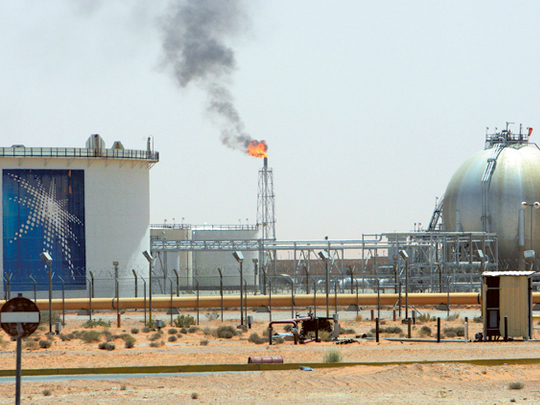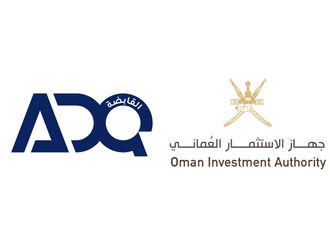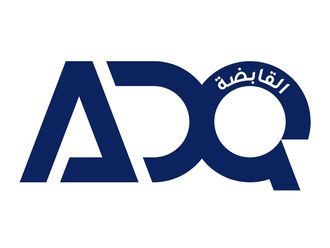
Recent, medium-term themes of significant relevance to the Gulf economies, namely a rising US dollar and falling oil prices, have shown no signs of abating. While offsetting each other to some extent in terms of their effect on regional purchasing power, they are independently no less noteworthy for that.
Talking of independence, markets of course have been distracted by the wilfully self-destructive indulgence of the UK, a G7 power, in putting a deciding vote as to its own dissolution in the hands of less than ten per cent of its population, including the votes of 16-year-olds and foreigners living in Scotland, but not Scots in the rest of the UK.
The volatility produced by that event may just be a blip, but it amounts to the latest example of the world remaining in a dangerous limbo of uncertain direction, with little more than the promise of the authorities to keep easy money in place to underpin confidence — except to say that China has signalled its intent, at a world forum recently, to restructure rather than perpetually reflate itself in pursuit of prosperity.
A key consequence is the dollar’s continual ascent, rooted presumably not only in its safe-haven appeal but the growth story that is recurrent where an economy is allowed sufficiently to reinvent itself through the destruction of unproductive industries and practices and their replacement by more viable arrangements, where social and political norms allow.
In the Eurozone, meanwhile — whose exchange rate against the dollar is the prime mover in both currencies’ overall trends — the central bank is inching towards debasing cash further, to try to stimulate activity. For the moment such maneouvering amounts only to specific kinds of asset purchases, not full-blown quantitative easing. It seems unlikely to succeed.
It is no wonder, then, that many traders have decided that the trend is their friend, as the jargon has it, and a certain amount of momentum has developed behind the greenback. The malaise of both China and Japan only supports that movement, while the lack of conviction even to America’s recovery denies gold the impetus that an inflationary threat would provide.
The dollar’s surge will have benefited further from the unwinding of carry trades, namely the effort by traders to leverage returns in foreign exchange investments by borrowing in a low-rate currency to take advantage of higher rates in other currencies, a self-fulfilling process while it lasts.
It should also help rebalance what measure of economic growth there is in the world by adjusting relative competitiveness in favour of those blocs that most need it, which is what floating exchange rates do.
The less satisfactory tendency of currencies to overshoot their equilibrating valuations, meanwhile, is one that investors will doubtless take further note of, boosting the Gulf’s purchasing power (in both dollar-denominated oil receipts and domestic dollar equivalents) again.
That said, the countervailing factor of diminishing oil prices is equally plain to see, with Brent having moved decisively below the $100 level that has become unofficially established as the minimum norm acceptable to the GCC exporters.
As ample global inventories have outweighed geopolitical concerns, for the moment, Opec and Saudi Arabia especially have an evolving balance to assess between propping up prices by way of output cuts and the need to maintain market share. At the same time, oil’s slide, if sustained, should in turn prop the collective global economy over time, as the Gulf itself ultimately requires.
Still, suggestions of a structural shift in the world market, reflecting weak demand overall and developing supply beyond the Gulf are liable to become the next theme to grab attention, and indeed are already prompting reactive comment. The region’s accumulated reserves of wealth, considerably built in recent times of stronger oil prices, will have to dovetail with sustained official attempts to mould together the GCC’s renewed economic drive, structural reconfiguration and financial soundness.
As to stock markets, awareness has grown that buoyancy upon liquidity is being reinterpreted as treading water, in relatively becalmed conditions. The reward from continuing dividends thereby becomes the greater part of returns, and has to match the risk of submergence in prices. Investors have then to make a call on whether reinvesting those dividends — usually generating the better part of wealth accumulation over time — makes sense at this stage of the bull market.
That in itself presents a reminder that stocks have been driven this far, particularly in emerging markets, not only by a tide of abundant dollars but by a feverish search by international money managers for yield.
Visiting North America last week, this correspondent was reminded that invocations to ‘yield’ appear as road-signs invoking drivers to stop, and give way to other cross-currents of traffic. As the dollar passes across the Gulf’s vision one way, and oil the other way, some kind of intersection is being faced as to global markets right now.












